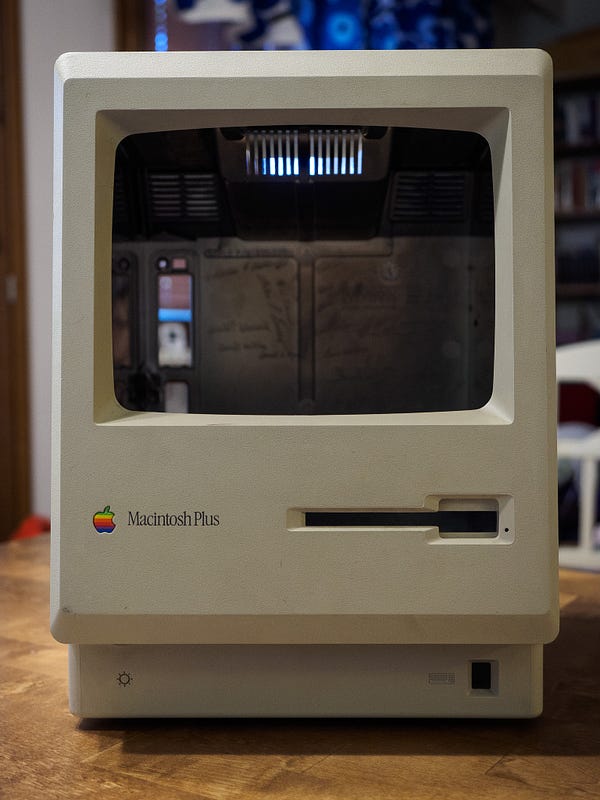

- #MAC OS7 EMULATOR RASPBERRY PI INSTALL#
- #MAC OS7 EMULATOR RASPBERRY PI FULL#
- #MAC OS7 EMULATOR RASPBERRY PI SOFTWARE#
- #MAC OS7 EMULATOR RASPBERRY PI PC#
Flint OS es un nuevo sistema operativo para el Raspberry Pi que busca llevar a este.
#MAC OS7 EMULATOR RASPBERRY PI SOFTWARE#
Now you’ll need a Mac IIx ROM image (which I’m not supposed to help you find, but it’s an easy search) and OS image disks from the Mini vMac System Software page. It is multi platform and runs on Windows, macOS and major Linux. It’s a really simple build, and fast, too.
#MAC OS7 EMULATOR RASPBERRY PI FULL#
The build program will export a file out/minivmac-3.5.0-larm.tar that you can unpack into the full source code. I’ve chosen to swap the Ctrl key with the Command (⌘) key, as most non-Mac keyboards work better with this. The build options I chose are: -t larm -ccs -m II -hres 512 -vres 384 -depth 3 -mf 2 -magnify 1 -em-cpu 2 -mem 8M Pretty much any basic setup and bootable disk will run this okay: Mini vMac building on an emulated Mac Classic booting from the System 7 Network Access floppy image (no, I couldn’t boot from Classic’s hidden boot ROM disk) You’ll also need a working Mini vMac setup, as it uses a 68k Mac program to set up the source. To build a Mac II-capable version of Mini vMac, you’ll need the Alpha source code. The screen size I’ve chosen is closer to a Color Classic, for no other reason that I like it. But maybe running it as a colour Mac II is. SIMPLE SETUP Generic USB controller, this uses a standard USB port, if your program or application. Gives you a range of up to 10-meters range. Connectivity: Advanced 2.4 GHz wireless RF.
#MAC OS7 EMULATOR RASPBERRY PI PC#
Running Mini vMac on a Raspberry Pi is hardly news. 2.4GHz Wireless USB SNES Style Controller Compatible with Super Retro Games, iNNEXT Game pad for Windows PC MAC Linux Raspberry Pi Emulator 30.99. In the next part, we’ll talk about configuring BasiliskII and installing System 7 from the disk images Apple kindly provides on its website.Yup, I have a failing for 512×384 screens … Eventually I discovered I could run it from the command line with the command: You may be able to run it from the command line with the command “BasiliskII”, but initially I was only able to get it to run from within the window manager. If you’re copying and pasting, each argument (such as enable-sdl-video) should begin with “dash dash”. configure –enable-sdl-video –enable-sdl-audio –disable-vosf –disable-jit-compilerĮdit: Apparently in the above line, Tumblr is replacing two “-” characters with a single long dash. There is no JIT compiler for ARM so we must disable it. Tune everything else out to stay focused on your work, or keep notifications at. Now run configure with the following flags. The thoughtful, capable, and ethical replacement for Windows and macOS. I installed alongside the other emulators in the ~/RetroPie/emulators/ directory
#MAC OS7 EMULATOR RASPBERRY PI INSTALL#
In this first, we will compile and install BasiliskII from sources.Ĭd to the directory where you want to download the source, and clone the github. I’ll be breaking down the process of installing BasiliskII on the Raspberry Pi down into three sections. I’ve been able to install BasiliskII with Macintosh System 7 alongside the rest of the RetroPie emulators under Raspbian and I’ll be detailing my process here.

Since I’m building my PiMac in the body of a Macintosh Classic, I very much wanted it to be able to run some of the great software I remember from that venerable machine. BasiliskII is an open source 68000 Macintosh emulator that can run on a variety of operating systems and processor types.


 0 kommentar(er)
0 kommentar(er)
